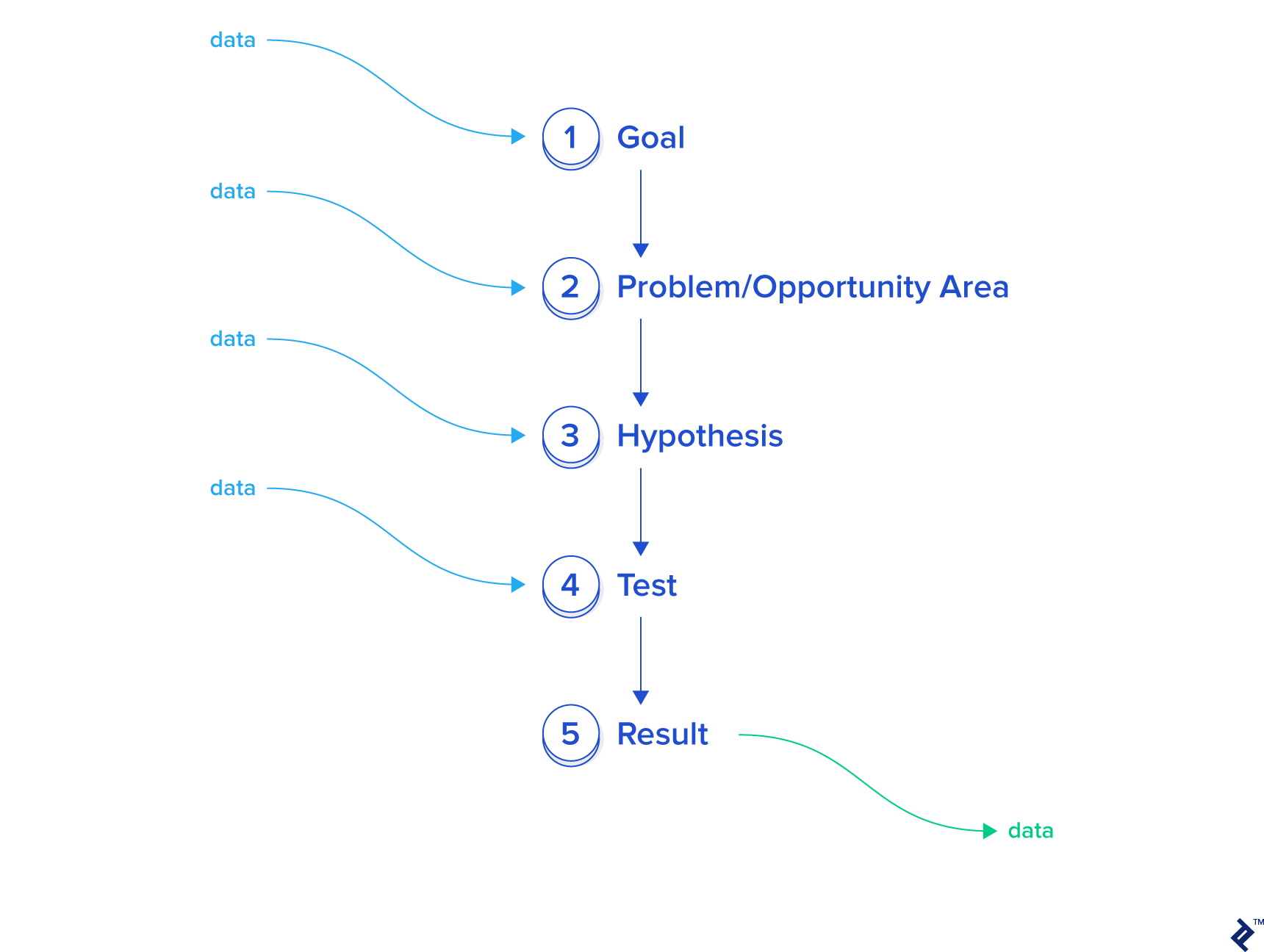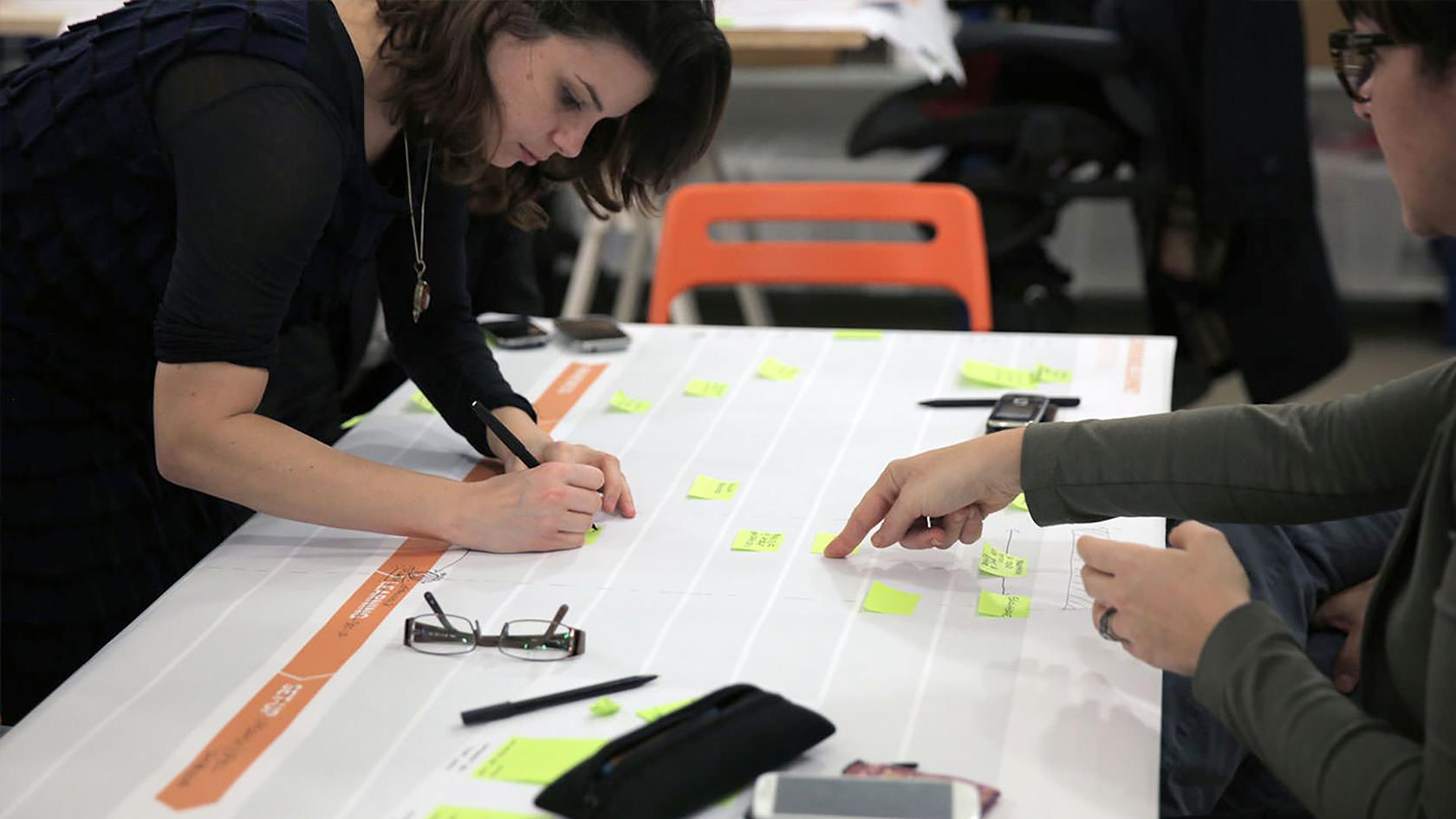Data-driven Design and Generative Design – An Overview
Data-driven and generative design are two important design processes that can be exploited at the same time to create better product designs and user experiences.
Data-driven and generative design are two important design processes that can be exploited at the same time to create better product designs and user experiences.

Shane Ketterman
Shane comes from a background in architecture and design, information technology, and content marketing, and has a passion for UX research.
Expertise
At the intersection of great design and better user experiences are two key concepts that complement each other while also being distinct in their approach.
Data-driven Design
The first use of the word “data” was in the 1640s. According to a common view, data is collected and becomes information suitable for making decisions once it has been analyzed.
Analyzed data can help expose problems, provide more information about those problems, and evaluate the effectiveness of solutions. This is true whether we are dealing with scientific data or design-related data.
“Collecting and analyzing data is key to creating better designs and user experiences,” writes Design Blog Editor Cameron Chapman.
As such, data-driven design uses data (both qualitative and quantitative) to inform designers throughout the design process. The resulting designs are more engaging and tailored to users’ preferences, goals, and behaviors.

Looking at the design process holistically, we can see where data-driven design fits in:
- Discovery
- Defining the problem
- Collecting information (data-driven)
- Brainstorming and analyzing
- Design
- Develop solutions (data-driven)
- Iterate
- Validation
- Feedback (data-driven)
- Iterate
Where do we get the data? Data can come from multiple sources such as analytics, user testing, research (primary, secondary, generative), and usability tests. It can be used in a variety of ways throughout the design process as there isn’t one canonical way that works for everyone in every situation. Here are a few tips for the application of data with respect to design:
- Numbers and context – Quantitative and qualitative data work well together to tell a complete story.
- Varied data – Analytics, customer service logs, sales data, interviews, surveys, usability tests, and A/B tests are a few examples.
- Sensitive to the human experience – Use averages sparingly, corroborate liberally, and infer with caution.
- Standardized sharing – Develop ways to discuss and share data so that everyone understands the basics together.
One or two pieces of data will not provide a well-informed set of outcomes, and since the goal is to develop a clear understanding of everyday experience, it’s a good idea to consider as many types of data as possible.
When we create designs based on user research, theories, or process, it’s data that gives us the answers with more credence. We could guess and “go with our gut,” but that can be costly and inefficient. It’s more effective to strategize than to guess.
A word of caution. It’s easy to oversimplify and misinterpret data. We may focus on one aspect and disregard what we aren’t interested in, or insert a subjective view which can lead both designer and user down a narrow path. Objectivity, an open mind, and giving consideration to all of the data points is a great approach to take.

Tools Used for Data-driven Design
As designers, we use both qualitative and quantitative data to inform and shape our designs, so it’s useful to understand some of the tools that can be used. This is by no means an exhaustive list of all the various techniques tools or software available.
Quantitative Data-driven Design Tools
This assumes tools such as Google Analytics, Adobe SiteCatalyst, etc., are in place.
- Unbounce – A landing page tool used to A/B test various page layouts.
- Optimizely – Another landing page tool that also provides analytics and multivariate landing page tests.
- Google Optimize – Integrated into Google Analytics, Optimize helps designers understand how a website can be improved.
Qualitative Data-driven Design Tools
- UserTesting – A tool for user research providing actionable insights.
- Usability Hub – An end-t0-end remote user testing platform.
- Optimal Workshop – An online suite of usability tools for websites and information architecture.
- Crazy Egg – A heatmap tool to help understand and improve website layouts.
Best Practices for Data-driven Design
Data-driven design works best when an organization adheres to standards and practices across all design teams. Here are a few best practices for successful data-driven design:
- Use quantitative data to track progress once changes are implemented—for example, analytics sessions, bounce rates, and heat map results.
- Use data triangulation to find the right problem/opportunity areas and to narrow down hypotheses.
- Write and document well-structured hypotheses that can be measured and validated.
- Have a testing strategy that can be communicated broadly. It should go a few layers deep, but not too many, and it should be periodically updated.
Data, while arguably useful to the design process, shouldn’t be used exclusively. It’s easy to imagine a situation where the immediate feedback from a data-driven approach could lead to the conclusive end of a project without consideration for other types of input.
Generative Design
Whereas data-driven design is driven by quantitative, and to a lesser extent qualitative inputs, generative design introduces information into the design process that is free-flowing and iterative.
In the manufacturing industry, generative design leverages machine learning to mimic nature’s evolutionary approach. Design parameters are entered into software, and algorithms explore all possible combinations of a solution, often resulting in hundreds of options.

Generative design is the exploration of possible combinations, which in the design process is called iteration, i.e., cycling through many different “designs” to arrive at varied solutions.
In product design, this concept is much like the design thinking process, only instead of software, people are doing the iterating and ideating. Designs are generated based on a set of inputs (ideas, life experiences, etc.).
In the 1980s, Author Bryan Lawson suggested a set of design exercises where designers and architects worked side-by-side in a participatory manner. Up until this point, designers didn’t see the need to include “outsiders” as part of their process. While controversial at the time, the success of these exercises proved that an early generative approach was the right thing to do.

Generative Design and the Design Process
As with data-driven design, generative design occurs during all phases of the design process:
- Discovery
- Defining the problem (generative)
- Collecting information (data-driven)
- Brainstorming and analyzing (generative)
- Design
- Develop solutions (data-driven)
- Iterate (generative)
- Validation
- Feedback (data-driven)
- Iterate (generative)
Note that with a new design, there is no data to draw on yet, so we tend to do generative design first. Once we have some ideas to put out into the world, we can then gather our qualitative and quantitative data.
Generative and data-driven design complement each other. With data-driven design, we arrive at solutions that are static due to the quantitative nature of the input. We then apply generative design, and end up with free-flowing results that are iterated on and shaped as more ideas are brought forward.
Generative design can play a key role in enabling designers to tackle bigger problems they may have otherwise been unable to solve. Data-driven design will confirm those problems have been tackled successfully.
Here are some advantages to the generative design process:
- Increased creativity – More ideas are formed due to the iterative nature of generative design.
- Inclusive design – Including different voices and inputs into the process drives a more inclusive process.
- Increased outcomes – As the process continues through the stages of design, more outcomes are produced.

Tools Used for Generative Design
The tools designers use for generative design are much different than those we use for data-driven design. With generative design we are interested in tools that help us iterate and better understand people from a qualitative perspective:
- Post-It Notes – The easiest way to generate ideas. Post-It notes are used in brainstorming sessions as a way to capture people’s thoughts quickly and easily.
- Whiteboards – Brainstorming is an inclusive exercise allowing people to bring in outside perspective and ideate as a group.
- Balsamiq – Low-fidelity wireframing software tool useful for iteration and gathering user feedback.
- Sketch – A popular software tool that can be used for wireframing, prototyping, and mockups during all phases of the design process.
Successful Generative Design
Generative design is an ongoing process and a thoughtful examination of the human experience as it pertains to the design problem at hand. Here are a few tips to keep in mind:
- UX research – Bring customer-centric thinking into the design process as early as possible. Generative design relies on human-centered feedback
- Test designs early – Iterative testing is a big part of generative design and is ongoing throughout the design process.
- Inclusive design – Including people with different backgrounds and levels of experience helps bring fresh, new perspectives to the table.
An Optimized Future
Data-driven design and generative design coexist to create better human experiences through design. Data and data-driven design gives us concrete information we can use to analyze a problem.
If it weren’t for the data, we would have nothing worth examining. Once we have a set of solutions in mind, we can then infuse generative design to help shape those solutions into outcomes.
In many ways, the fusion of these design processes may embody the future of design: bridging the gap between design thinking and traditional design.
We have only begun to scratch the surface of where these two design approaches can take us. If data-driven design was instrumental in some of the world’s most innovative products and services, much can be gained from combining it with generative design. Perhaps the two could pave the way to the solution of complex design problems.
Let us know what you think! Please leave your thoughts, comments, and feedback below.
Further Reading on the Toptal Blog:
- The Principles of Design and Their Importance
- The Best UX Designer Portfolios: Inspiring Case Studies and Examples
- Exploring the Gestalt Principles of Design
- Adobe XD vs. Sketch – Which UX Tool Is Right for You?
- The 10 UX Deliverables Top Designers Use
- AI in Design: Experts Discuss Practical Applications, Ethics, and What’s Coming Next
Understanding the basics
What exactly is data analytics?
Data analytics is the process of drawing insights from raw information sources. Data-driven design and data analytics can help businesses increase revenues, improve operational efficiencies, and respond more quickly to emerging market trends.
What is a UX persona?
A persona is a written representation of an intended user for your product or service. The purpose of a persona is to bring a real-world perspective to your project through the eyes of target users. Personas are critical design tools for empathy and user experience.
What is generative research?
Generative research is conducted in order to generate information about users and how they behave. Generative research helps define the problem under consideration.
What is usability testing in UX?
Usability testing is the evaluation of a product or service by testing with representative users. The tests will usually involve users completing various tasks while observers watch, listen, and take notes. It’s often part of data-driven design.
What counts as quantitative data?
Derived through data-driven design, quantitative data is numerical or data that can be transformed into usable statistics. What counts as quantitative data is any information that is measurable and can be counted.
